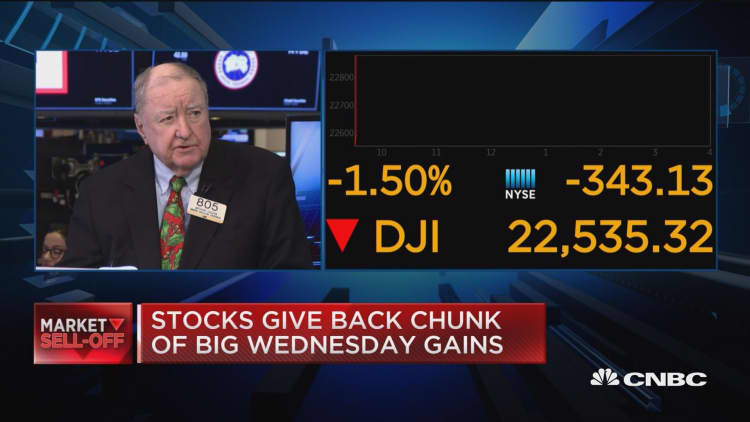History has shown that the Federal Reserve can and will change its mind on a dime when it comes to raising and cutting interest rates, according to an analysis by David Rosenberg, the chief economist and strategist at Gluskin Sheff.
"When I tell people the Fed will be easing monetary policy in coming months, the view is met with derisions of laughter. But it is not a laughing matter," Rosenberg told clients in a note Thursday. "These folks who sneer and shake their head just because of what the central bank is saying today are not students of history."
The Fed currently is committed to a steady but gradual pattern of rate hikes in a quest to normalize policy from the extreme easing of the years during and after the financial crisis. Central bank officials have approved four rate hikes this year and have indicated two more are coming in 2019, a reduction from the three forecast prior to last week's Federal Open Market Committee meeting.

However, the market currently doesn't think the Fed will hike at all next year.
Stocks teetering on bear market territory, slowing global growth and trade tensions between the U.S. and China are some of the obstacles investors think the Fed will confront that will prevent it from further tightening.
Rosenberg is among a small group of Wall Street experts who think that not only is the Fed done hiking but it also soon will be cutting rates as the economy continues to wobble. History, he said, is on his side.
"The Fed is predictably slow to see the turning points" in the economy from expansion to contraction, he said. "But when policymakers see the turn, the shift in policy comes quickly and often spectacularly."
Citing multiple instances since 1995, Rosenberg said the Fed has gone from raising rates to lowering in a period of a few months. He points to the March-July period in 1995, the June-September span in 1998, November 2000 to January 2001 and, finally, the whirlwind events around the financial crisis when the Fed went from worrying about inflation in August 2007 to a dramatic 50 basis point — half a percentage point — cut that September.
That 2007 rate slash began an unprecedented round of easing that saw the Fed's benchmark rate cut to near zero and the central bank embarking on three rounds of asset purchases that ballooned its balance sheet to $4.5 trillion.
During the total period, Rosenberg said it took the Fed on average just two months to turn from a tightening bias to loosening.
"The about faces, especially from the Summer of 2007 to the Fall of that year, as well as the fact that the Fed had switched to a tightening bias in the Summer of 2008 then eased policy dramatically that Fall, are reminders that we all have to do our own homework and not always rely on the central bank's assessment," he wrote.
While not pricing in a cut for 2019, the market is coming around to Rosenberg's thinking.
Traders in the fed funds futures market are indicating just a 13.5 percent chance out to January 2020, according to the CME's tracker. In fact, the market is pricing in a 25.3 percent chance of a rate cut by then.
The current funds rate is targeted in a range between 2.25 percent and 2.5 percent.


